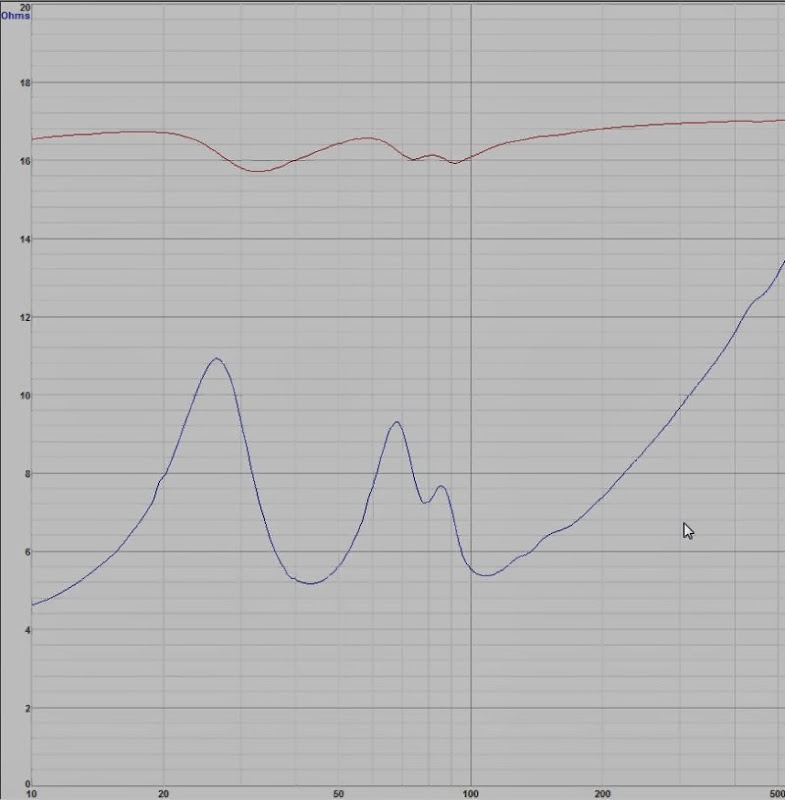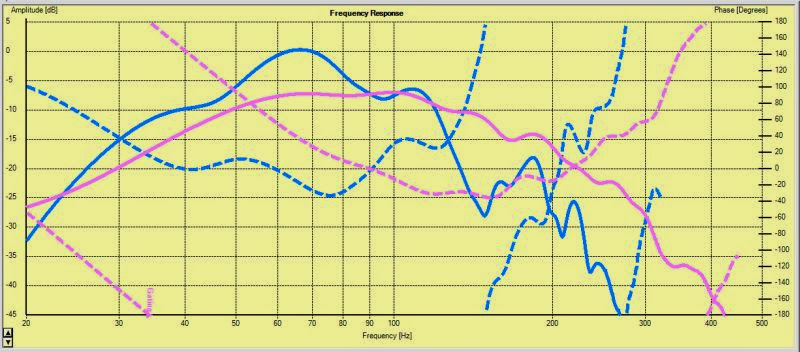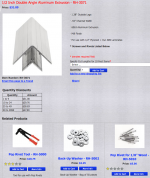Originally Posted by weltersys
That said, increasing the build time by around 4 times for a shell weight savings of 40% still does not appeal to me.
Multiply that by four, and I'd still not be done ...
...
That said, increasing the build time by around 4 times for a shell weight savings of 40% still does not appeal to me.
Took me around 65 hours to finish the last four Keystone cabinets.It sure appeals to me.(And my back.)
Multiply that by four, and I'd still not be done
 ...
...Wow. Great info. Still, there must be SOMETHING out there that would work & be "safer."
Yeah, go back to the kayak builds I linked earlier (post 25) and read everything he wrote, for example:
"Many old boats built before fiberglass and marine epoxies had canvas impregnated with paint for the decks. If you can find one of those old wooden boats rotting away in the back of some boat yard, some digging with a knife will show that the wood under the painted canvas is as sound as the day the paint was put on."
This is a repeat of the thread I linked earlier (post 18)Supposed you used 3/4" BB or similar, then cut relief holes in the ENTIRE cabinet, such as Horst shows in his braces. THEN, wrap / epoxy fiberglass around the entire outside?
You'd still have strength, the fiberglass would likely have a low resonant frequency, and heck, you even gain some "free" internal volume.
If I start with 18mm ply, then expend a lot of labour to cut 50% of it away, it will yield a core that weighs ~6.3kg per square metre.
The polypropylene grid that I bought is cheaper, much easier and is only 3.8kg per square metre.
More ideas here:
Why aren't we building horns this way?
I've seen a few builds with sonotubes
YouTube
I call this my "depth charge sub."
It's basically a horn sub crammed into a sonotube
An externally hosted image should be here but it was not working when we last tested it.
It's a folded horn that looks like an orange if you sliced it in half

Tuned to about 42Hz

The blue line is the frequency response
TLDR: you can stuff just about anything into a sonotube. Sealed sub, ported sub, bandpass sub, tapped horn, front loaded horn.
And YES, it's way lighter. Plus, you can roll it instead of carrying it.
Details ?
There's a little bit here, but not a whole lot:
Car Audio | DiyMobileAudio.com | Car Stereo Forum - View Single Post - Sealed Box versus Infinite Baffle
I can't recall if I ever posted a proper thread. The idea is that it's a folded horn, but it's folded into a sonotube.
Basically a conventional folded horn, but the folds are arranged radially.
It's actually a fairly easy build because all the radial 'fins' are the same diameter and height.
that's really cool - so each segment is somewhat less than a full turn (with a vertical divider ?) and progresses to a larger opening - steps to another chamber doing the same until the expansion is finished and fired out the side of your Sonotube. and the path is basically a spiral (???) That takes skill to make and seal the leaks.
Epoxy impregnated foam core as used in surfboards, boats and airplanes works well, but is a mess to work with, and more than 2-3X the cost of Baltic Birch. First saw it used in the early 1980's for speakers. Do a cost study on surfboards and you'll see why it's never gained much traction in the touring business.
You could buy a trailer and a ramp for a lot less cost, and save a lot of lifting and loading work and effort.
That's probably similar to what they make this electric bus out of: (Fiberglass over epoxy-impregnated balsa.)
YouTube
I've looks at a lot of composites, and the prices are typically heart-stopping.
I'm thinking now of trying a simple DIY composite: 1/8" ply on each face of some very dense foam. It should work well re weight, strength, and durability, but there's no way to know how well it damps until I try it.
Having done composite construction, hard to think of it as "simple".I'm thinking now of trying a simple DIY composite: 1/8" ply on each face of some very dense foam. It should work well re weight, strength, and durability, but there's no way to know how well it damps until I try it.
Every aspect of construction is far more difficult.
Without using aluminum corner extrusions, and ball corners, a 1/8" ply/foam "sandwich" would be neither strong or durable, though damping would be OK.
A 1/8" ply/foam "sandwich" would not be good for speaker baffles, it would continually compress from the weight and screw pressure, eventually cracking the materials after several screw loosening/tightening cycles.
Epoxy-impregnated balsa or foam core creates a lightweight, stiff matrix that simple lamination to empty foam does not.
Attachments
Clearly there's no Iron Law for construction... once you have clever people on the job.
For my 17-foot pipe, I used quarter-inch plywood. No kidding. After all, I had to drag the large box into the music room and other real-world constraints. To some of the longer panels I bonded sheets of celotex (wood finer and potato starch and plastic facing). It is quite light in weight, cheap, damped, and best for my purposes, it may help absorb the awful partials you get in a TL.
The box still vibrates as much as a cheap speaker. But honestly and against all consensus, I can't say as the vibrations impair the sound from my pipe or that I have ever seen published data showing that it ever does. Granted, a pipe or TL is a good candidate for thinner walls and a sealed box (esp within a true horn) is the worst.
17 foot pipe sub 12-230 Hz ±5dB
B.
For my 17-foot pipe, I used quarter-inch plywood. No kidding. After all, I had to drag the large box into the music room and other real-world constraints. To some of the longer panels I bonded sheets of celotex (wood finer and potato starch and plastic facing). It is quite light in weight, cheap, damped, and best for my purposes, it may help absorb the awful partials you get in a TL.
The box still vibrates as much as a cheap speaker. But honestly and against all consensus, I can't say as the vibrations impair the sound from my pipe or that I have ever seen published data showing that it ever does. Granted, a pipe or TL is a good candidate for thinner walls and a sealed box (esp within a true horn) is the worst.
17 foot pipe sub 12-230 Hz ±5dB
B.
Having done composite construction, hard to think of it as "simple".
Every aspect of construction is far more difficult.
Without using aluminum corner extrusions, and ball corners, a 1/8" ply/foam "sandwich" would be neither strong or durable, though damping would be OK.
A 1/8" ply/foam "sandwich" would not be good for speaker baffles, it would continually compress from the weight and screw pressure, eventually cracking the materials after several screw loosening/tightening cycles.
Epoxy-impregnated balsa or foam core creates a lightweight, stiff matrix that simple lamination to empty foam does not.
Goodpoints Art, thanks.
I do intend to use formed corners for reinforcement (maybe even a thin fiberglass wrap on the outside,) but I didn't think about the foam compressing-expanding.
Uggh. Well, you just saved me a few months on a failed attempt.
Back to the expensive stuff, I guess.
Epoxy-impregnated balsa or foam core creates a lightweight, stiff matrix that simple lamination to empty foam does not.
Can you please link the exact products you're talking about?
e.g. by foam core, do you mean the craft store stuff that xrk971 builds so many projects with?
Craft store foam core is not designed to be epoxy impregnated.e.g. by foam core, do you mean the craft store stuff that xrk971 builds so many projects with?
End-grain balsa wood absorbs lower cost polyester resin, which will eat many plastic foams.
Foam core such as the brand named "Divinycell" cross-linked PVC foam core is typical of boat construction and available at boat supply companies:
Sandwich Core Composite Materials
Evonik's ROHACELL® HERO polymethacrylimide (PMI) foam core material is another "step up" in performance and cost, typically used in aircraft.
"The sky's the limit" ;^).
Art
Last edited:
At 64 pounds, it's heavier than Luan, lighter than Birch.At my local Home Depot they now have 3/4" thick white PVC in 4x8' sheets. Like a full sheet of plywood, but PVC. A little pricey at $67 a sheet. Not that I want to build speaker boxes from PVC, but no one ever offered me the choice before.
Last edited:
I get very large aluminium plastic composite sheets from signs shops. they have old signs that are junk to them. they remove them from jobs when they are replacing a old sign with a new one.
Been thinking about making my first subwoofer out of the stuff. also light weight shipping boxes
Been thinking about making my first subwoofer out of the stuff. also light weight shipping boxes
Another way to look at the weight problem is in terms of temporary weight.
I recently built a large speaker over 7 feet tall - I think like 13 cu feet exterior size*. But made it in two pieces. The upper part simply rests on bottom with strips of some good Parts Express foam between.
So designing things that re-assemble well is one approach.
Another approach is water. I guess the talk about plastic in previous posts brought it to mind, but.... the walls are hollow and you fill and drain as needed.
The "Iron Law" omits the critical fourth trade-off: imaginative design.
B.
* large but takes a mere 2 square feet of floor space:
17 foot pipe sub 12-230 Hz ±5dB
I recently built a large speaker over 7 feet tall - I think like 13 cu feet exterior size*. But made it in two pieces. The upper part simply rests on bottom with strips of some good Parts Express foam between.
So designing things that re-assemble well is one approach.
Another approach is water. I guess the talk about plastic in previous posts brought it to mind, but.... the walls are hollow and you fill and drain as needed.
The "Iron Law" omits the critical fourth trade-off: imaginative design.
B.
* large but takes a mere 2 square feet of floor space:
17 foot pipe sub 12-230 Hz ±5dB
Last edited:
- Status
- This old topic is closed. If you want to reopen this topic, contact a moderator using the "Report Post" button.
- Home
- Loudspeakers
- Subwoofers
- Better ($$) alternative to plywood?
